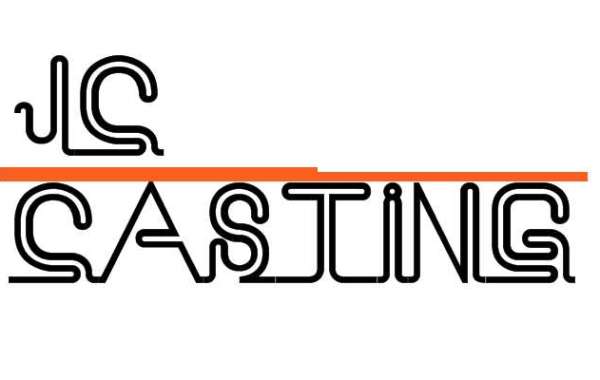Investment casting tolerance refers to the size range that investment casting can meet. There are various investment casting processes, such as water glass lost wax casting, lost foam casting and sol casting. . Each casting process has its own way of casting molding, which is suitable for different types of products. Tolerances can be affected by a number of factors. For example, mold temperature, wax or plastic temperature, injection pressure, mold or housing composition, back-up sand, firing temperature, cooling rate, position of the part on the "tree" and heat treatment temperature all directly affect the required tolerances. Investment casting industry. Although the investment casting industry has tolerance standards, it varies from foundry to foundry, some may specialize in thin-walled small parts, while others are more specialized in larger parts. And equipment may also have a certain impact on casting tolerances.
Generally speaking, we can divide investment casting tolerances into linear tolerances and geometric tolerances.
Linear tolerance
Linear tolerances are commonly applied to the following features of investment castings: length, concentricity, fillet radius, hole, flatness, straightness, corner radius, and curved hole. And the linear tolerance of each casting process is different. For example, lost wax casting of water glass can control the general linear tolerance between CT7-CT8, lost foam casting can reach CT8-CT9, and the tolerance of silica sol casting is the most accurate, it is CT5-CT6.
geometric tolerance
Geometric tolerances are commonly applied to the following characteristics of investment casting: flatness, straightness, parallelism, roundness, hole tolerance, curved holes, inner radius, and fillet.
Flatness
Flatness tolerance is the total deviation accepted from the plane. The surface of the investment casting must lie between the flattest plane and the plane that affects the maximum allowable deviation.
The amount of volumetric shrinkage of wax and metal during cooling will always determine the flatness of an investment casting. This shrinkage is usually at the center of mass and is referred to as a "dish". The dish can be controlled by specialized techniques, but will always be present in some way. Due to different configurations and alloys of investment castings, general flatness tolerances cannot be quoted.
Straightness
People always get confused about the difference between straightness and flatness because it seems so close. When it comes to tolerances for straightness, the maximum allowable diameter of a part to deviate from a perfect straight line will determine the straightness.
For some types of investment castings, straightness can be a real problem. Because it is easy to bend for some relatively thin and short parts. Based on our casting experience, we may check the designed part for bending, but it is difficult to say how much before production. As a rough guide, constant sections tend to experience axial bending of approximately 0.024 inches per foot.
parallelism
When you see blueprints that contain parallel pins that are only supported on one end, it means that there are special challenges in completing precision investment casting. Once your part has a parallelism requirement, our engineers at the CFS foundry will discuss this with you prior to production.
Due to the volumetric shrinkage of the support structure, it is difficult to maintain the parallelism of these pins. The yoke hole also deforms significantly when it reaches ambient temperature. Careful design adjustments to volumetric shrinkage are critical to obtaining accurate parts. These workpieces benefit from a wider range of tooling and finishing.
roundness
The radial difference between the true circle and the given circumference will define the roundness. We can test for roundness by reading the total indicator after rotating the part 360°. Another way to check roundness is to take half the difference between the maximum and minimum values. The latter method is recommended as it takes less time and is more efficient.
We measure roundness by the difference between the minimum and maximum radii of circular parts. Our inspection process will strictly control the roundness of the parts and pick out parts that are outside the given tolerances.
Concentricity
Concentricity is checked by two cylindrical faces that share a common point or axis as their center. The degree of eccentricity is determined by the difference in size of the position of one center relative to the other. For every 1/2 inch of wall thickness, the center of the hole is within 0.003 inch of the OD of the part.
hole tolerance
Hole tolerance is the necessary roundness of casting holes. The metal around the hole must be symmetrical to provide proper fit and/or clearance. This is important for castings that fit together, such as axles, to ensure that they fit snugly without vibration. Longer holes may experience more internal concavity, such that the diameter of the inner hole is larger than the diameter of the opening. We need to pay more attention to meeting the specified hole tolerances.
Hole tolerances will favor internal shrinkage, and for diameters up to 1/2", hole clearance can be within +/- .003", providing accurate shape and fit.
Curved holes, inner radii and fillets
Prefabricated ceramic cores or soluble wax can form curved pores. To account for curvature, the normal hole tolerance will be doubled and the tolerance of all dimensions will be multiplied by 2. We cannot determine the dimensions of these holes, so we provide a diameter tolerance of +/- .005. ” For inner radii and fillets, they should be designed to be as wide as possible as they are difficult to control and inspect.








